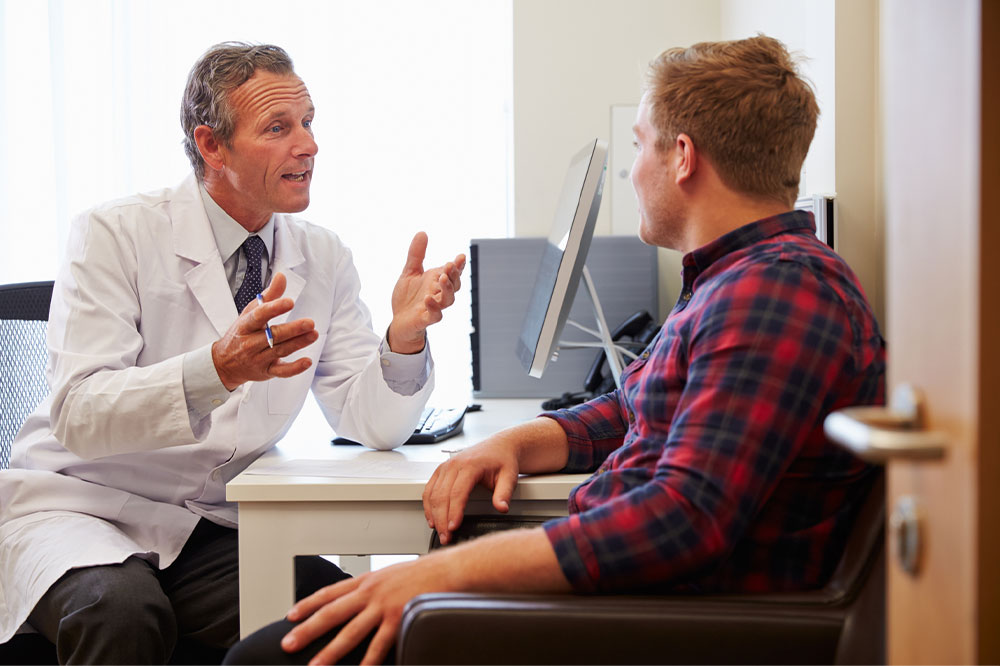
Parkinson’s – Signs and symptoms, causes, and management
Parkinson’s disease is a brain disorder wherein some parts of the body start to deteriorate, causing impaired body movements and severe signs over the years. Though Parkinson’s is known for how it hampers balance, muscle control, and movement, it can also impact the senses, mental health, thinking ability, and more. The causes are predominantly unknown, but most are inherited. Parkinson’s is not curable, but doctors can recommend some treatments for symptom management.
Signs and symptoms
Some common symptoms associated with Parkinson’s are:
- Rhythmic and involuntary movement of the jaw, legs, arms, and hands (tremors)
- Flexed or stooped posture with bending at the hips, knees, and elbows.
- Dementia
- Depression
- Slow movements
- Blank facial expressions
- Low-volume or muffled speech
- Tendency to fall backward
- Unsteady balance or walk
- Limb stiffness or muscle rigidity, typically in the neck, shoulders, or arms
- A progressive decline in voluntary movements results in reduced cognitive abilities or slower reaction times, altered vocal characteristics, diminished facial expressions, and similar changes.
- A gradual decline in involuntary movements, potentially leading to decreased blinking, swallowing, and drooling frequency.
Causes
The exact causes of Parkinson’s remain unidentified. But most environmental and genetic components have a role. Experts believe that some viruses might also trigger it. Low norepinephrine and dopamine levels are also plausible causes of Parkinson’s. Typically, people with Parkinson’s have Lewy bodies or abnormal proteins in their brains. Though its role is unknown, it leads to Parkinson’s development. While no identified cause exists, research suggests that some people are more likely to develop this condition than others. It is because of their risk factors. Some risk factors associated with Parkinson’s are:
- Sex – Men are more susceptible to developing Parkinson’s than women.
- Race – Studies suggest that Parkinson’s is more prevalent in white people than Asian or Black people. Hence, geographic location can be a reason for higher risk.
- Age – Parkinson’s is prevalent in people between 50 and 60. In only four percent of people, it occurs before 40 years.
- Family history – People whose close family members have the disease are more prone to developing it.
- Toxins – Exposure to some toxins also aggravates the risk of developing the disease.
- Head injury – People experiencing head injuries are more susceptible to developing Parkinson’s disease.
Treatment options
Treatment for Parkinson’s depends on a combination of therapies, lifestyle changes, and prescription remedies. Adequate exercise, rest, and a balanced meal are crucial. Occupational, speech, and physical therapy can also play a role in self-care and better communication. Your doctor may also recommend treatments to help manage your mental and physical health symptoms linked to the disease.
Surgery
In some people, doctors may recommend surgeries if they do not respond to another line of treatments. Broadly, two surgeries employed for Parkinson’s treatment are:
Deep brain stimulation
In DBS or deep brain stimulation, the surgeon implants electrodes in some brain parts. After this, they connect a generator to the electrodes to send out pulses that alleviate symptoms.
Pump-delivered therapy
It is a relatively newer form of FDA-approved treatment where the pump delivers a combination of treatments to manage symptoms. To use the pump, the doctor conducts a surgical procedure for inserting the pump near the intestine.




